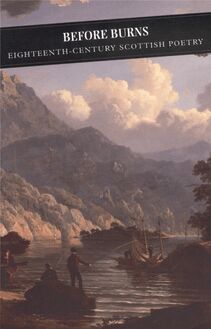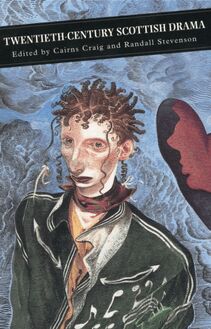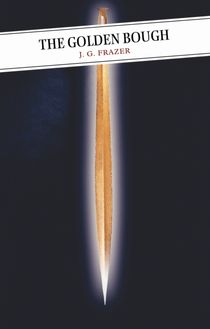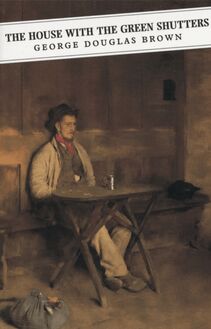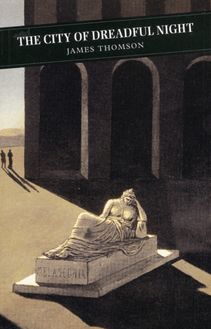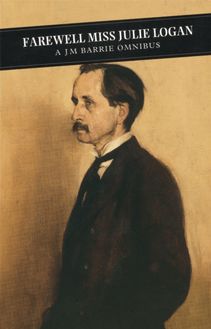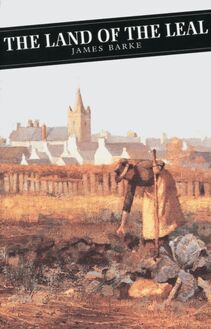-
 Univers
Univers
-
 Ebooks
Ebooks
-
 Livres audio
Livres audio
-
 Presse
Presse
-
 Podcasts
Podcasts
-
 BD
BD
-
 Documents
Documents
-
- Cours
- Révisions
- Ressources pédagogiques
- Sciences de l’éducation
- Manuels scolaires
- Langues
- Travaux de classe
- Annales de BEP
- Etudes supérieures
- Maternelle et primaire
- Fiches de lecture
- Orientation scolaire
- Méthodologie
- Corrigés de devoir
- Annales d’examens et concours
- Annales du bac
- Annales du brevet
- Rapports de stage
La lecture à portée de main
Vous pourrez modifier la taille du texte de cet ouvrage
Découvre YouScribe en t'inscrivant gratuitement
Je m'inscrisDécouvre YouScribe en t'inscrivant gratuitement
Je m'inscrisEn savoir plus
Vous pourrez modifier la taille du texte de cet ouvrage
En savoir plus

Description
Sujets
Informations
| Publié par | Canongate Books |
| Date de parution | 01 juillet 2010 |
| Nombre de lectures | 0 |
| EAN13 | 9781847675941 |
| Langue | English |
Informations légales : prix de location à la page 0,0800€. Cette information est donnée uniquement à titre indicatif conformément à la législation en vigueur.
Extrait
John Barbour
THE BRUCE
An edition with translation and notes by
A. A. M. DUNCAN
Contents
PREFACE
INTRODUCTION
1) The reader
2) John Barbour
3) The Bruce – antecedents
4) The composition of the poem
5) The source question
6) King Robert
7) Edward Bruce
8) Moray
9) James Douglas
10) Ingram d’Umfraville
11) Other sources
12) Barbour at work
13) The text and editions
14) This edition
15) Abbreviations
List of Maps
THE BRUCE
Book 1)
Book 2)
Book 3)
Book 4)
Book 5)
Book 6)
Book 7)
Book 8)
Book 9)
Book 10)
Book 11)
Bannockburn Commentary
Book 12)
Book 13)
Book 14)
Book 15)
Book 16)
Book 17)
Book 18)
Book 19)
Book 20)
Jean le Bel on 1327
The Declaration of Arbroath.
Index
Copyright
Preface
When I was a schoolboy in 1940–44, the blackboard in our History classroom at George Heriot’s School carried a permanent text which an imaginative teacher, William Gould, asked us to memorise, a text for the struggle against tyranny which later took the lives of some of my class-mates. The fifteen lines of poetry began, ‘A! Fredome is a noble thing!’
Sadly they had little to do with a History curriculum then laid down by the Scottish Education Department and blessed by the universities (sadly, too, I heard nothing of the poem when I was an undergradute later in the 1940s), but, amid the dictated notes on the Diplomatic Revolution, there was always the poem on the board to show another approach to the past, through the materials it has left to us. That is what prevails in the classroom today, and it is my hope that this poem, which tells us so much about chivalric society in Scotland, will become known there and to newer generations of young Scots.
Many people then despised, and some people still fear, the study of the literature and history of Scotland. How wrong they are is surely proved by the work of my contemporaries, G. W. S. Barrow and T. C. Smout. There are two great books about Robert Bruce, one written in the fourteenth century by John Barbour, the other in our time by G. W. S. Barrow: Robert Bruce and the Community of the Realm of Scotland (1988). I have cited it rarely because there is almost nothing in it which one could not cite and am assuming that every reader will know it, or be prepared to discover it.
On thing you may look for in this book (or indeed Professor Barrow’s) and will not find there: the Bruce in a cave watching the trials of a spider seeking to spin its web across a gap and vowing that if the spider should succeed, he too would continue the struggle. It is one of the best known stories from Scotland’s history, but unfortunately there is no authority for it earlier than the eighteenth century. It is a folk tale told of others and borrowed for Bruce because he did indeed try and try again; so it has its value for our understanding because it resonates with the tribulations of which we read in this, Barbour’s more immediate and authentic account. This poem is a treasure as an historical source and a masterpiece of Scottish literature.
Over the years I have benefited from much critical help from Professor D. E. R. Watt, whose edition of Bower will stand when we are long gone. I wish to thank him and Dr Colm McNamee who kindly made available to me, in typescript, his The Wars of the Bruces which I found very helpful, and who saved me from errors in my notes on books 14–18. My colleague, Dr Graeme Small has been most patient in helping with the translation of Le Bel, and with other queries about French historiography, while Dr John Taylor of Leeds read the introduction and notes, gave me very helpful further light on English sources and spotted many spelling errors committed, of course, by my pc.
They will be understanding when I express as my greatest debt that to the University of Glasgow. First to my students there, who over twenty years put up with, sometimes shared, my enthusiasm for Barbour and who made me think about the poem week by week. Secondly to the University Library where I have enjoyed the privilege of a magnificent collection and a staff of sympathetic and helpful colleagues. Thirdly to the Scottish History Department, the Faculty of Arts and the University Court which have given me fellowship standing to make retirement less of a break from their congenial company.
In the 1999 reprint the translation has been improved by correction at 1.253, 1.295, 2.165, 3.140, 3.752, 4.14, 4.341, 5.125, 5.165, 5.647, 6.102, 6.507–8, 8.340, 8.434, 9.666, 10.448, 16.701, 17.694, 17.838, 18.332, 19.707; and by verbal improvements. There is a different text reading at 1.104 and a few notes have been revised. I am indebted for advice to Dr Jeremy J. Smith.
In the 2007 reprint it was not possible to update references to Professor Barrow’s Bruce to his 2005 edition, nor to do more than commend Colm McNamee’s biography, Robert Bruce (2006). The location of Dunipace has been corrected on p.446, and I have accepted the views of Professor James Taggart on p.102 n.4 for the identity of Seton, and p.300 n.202 for that of Little Loudoun, given in his 2004 Glasgow University Ph.D thesis on ‘The Historicity of Barbour’s Bruce’. Much else therein deserves publication.
Archie Duncan, February 2007
Introduction
1. THE READER
I hope that you have bought this book to read one of the masterpieces of Scottish literature, and an important account of the history of Robert the Bruce. It becomes a powerful narrative, alive with dramatic descriptions of travels by land and sea, escapes, single combats, sieges and battles; there is little about domestic or social life, much about the ethos and blood- spattered reality of chivalry. Above all, there is the invocation of freedom for our land which resonates so powerfully in the late twentieth century. The language is not easy, but neither is it difficult if you will persist with the initial problems, using the translation on the opposite page to discover what the words now out of use mean, and how Barbour arranges words to suit rhyme and metre. I have added a translation of the Declaration of Arbroath from Latin, another statement of the ideal of freedom, but contemporary with Bruce.
You need to know little other than Barbour’s language to enjoy the poem, but conventionally some background is supposed to help the reader. Barbour lived from the 1330s to 1395. For most of his adult life he was archdeacon of Aberdeen and, as he tells us, he was writing this poem in 1375 under the first Stewart king, Robert II, son of Bruce’s daughter. There is no significant piece of literature in Scots which is known to be earlier than The Bruce . It is written in that form of northern English known as early Scots, but, magré that, it also contains many borrowings from French. You may find his reminiscences of ancient Thebes and Rome and his digressions on necromancy and astrology strange irrelevancies in the biography of a great king, but they give an insight into the mind-set of Barbour and his readers which is still valuable.
I suggest that, unless you are familiar with the poem, you skip for now the studies in the rest of this introduction and betake yourself to the poem forthwith – and I mean the poem, not the translation! Afterwards you should find something of value and interest in the discussion which follows and in the notes, which seek to compare Barbour with other sources, not always to his advantage.
2. JOHN BARBOUR
1 John Barbour died on 13 March, 1395 after a documented career of forty years. His family background is a mystery, though the trade name suggests an urban origin. 2 His most recent editor, McDiarmid, rejected the north-east for John’s origins, because based only upon his ecclesiastical office. He suggested instead that the references in The Bruce to Ayrshire and Galloway placed him there, but the case is no stronger. His birth is usually placed about 1325, as much to give him a toehold in King Robert’s reign as for anything his career tells us, He could well have been born as late as 1335, because he appears out of the blue, in 1356, when he gave up the precentorship of Dunkeld, held for scarcely a year, 3 on his promotion to the archdeaconry of Aberdeen; his advancement had been very rapid, since there is no sign of his having held a chaplainry, vicarage or parsonage, as steps toward higher church office; this suggests that he owed these offices to a special event, and that he may have been much younger than usual for such promotion. When he obtained the Dunkeld post in 1355, he was probably at the papal court at Avignon with the previous precentor.
Scotland in 1354 had at last negotiated the ransoming of King David from seven years of captivity in England; the Guardian (Regent), his nephew Robert Stewart, unenthusias- tic at the prospect, tinkered with the prospect of French assistance, and so neglected the ransom negotiations that they fell through at the final stages. This politicking may have earned John Barbour his Dunkeld promotion for work in France, though in what way we cannot know. In 1356 he obtained the Aberdeen archdeaconry presumably from the same Stewart patronage; but King David came home in November 1357 for an even larger ransom, at which prospect John sought leave to study in England (August 1357). He had further English safe-conducts to leave Scotland when David II was an active king (1357–71), for study in England (1364), to visit St Denis, France (1365), and for study in France (1368); he may have studied at a French university 1368–71, but had already been to a university because in 1368 (and occasionally later) he is called ‘Master’. The rarity of this description suggests that he had not graduated and was not entitled to it.
After 1356 he received no further advancement in his long life, certainly not the bishopric for which he was as well qualified as any of the bishops. Everything suggests that he was a known client of Robert Stewart, who, in
-
 Univers
Univers
-
 Ebooks
Ebooks
-
 Livres audio
Livres audio
-
 Presse
Presse
-
 Podcasts
Podcasts
-
 BD
BD
-
 Documents
Documents
-
Jeunesse
-
Littérature
-
Ressources professionnelles
-
Santé et bien-être
-
Savoirs
-
Education
-
Loisirs et hobbies
-
Art, musique et cinéma
-
Actualité et débat de société
-
Jeunesse
-
Littérature
-
Ressources professionnelles
-
Santé et bien-être
-
Savoirs
-
Education
-
Loisirs et hobbies
-
Art, musique et cinéma
-
Actualité et débat de société
-
Actualités
-
Lifestyle
-
Presse jeunesse
-
Presse professionnelle
-
Pratique
-
Presse sportive
-
Presse internationale
-
Culture & Médias
-
Action et Aventures
-
Science-fiction et Fantasy
-
Société
-
Jeunesse
-
Littérature
-
Ressources professionnelles
-
Santé et bien-être
-
Savoirs
-
Education
-
Loisirs et hobbies
-
Art, musique et cinéma
-
Actualité et débat de société
- Cours
- Révisions
- Ressources pédagogiques
- Sciences de l’éducation
- Manuels scolaires
- Langues
- Travaux de classe
- Annales de BEP
- Etudes supérieures
- Maternelle et primaire
- Fiches de lecture
- Orientation scolaire
- Méthodologie
- Corrigés de devoir
- Annales d’examens et concours
- Annales du bac
- Annales du brevet
- Rapports de stage
